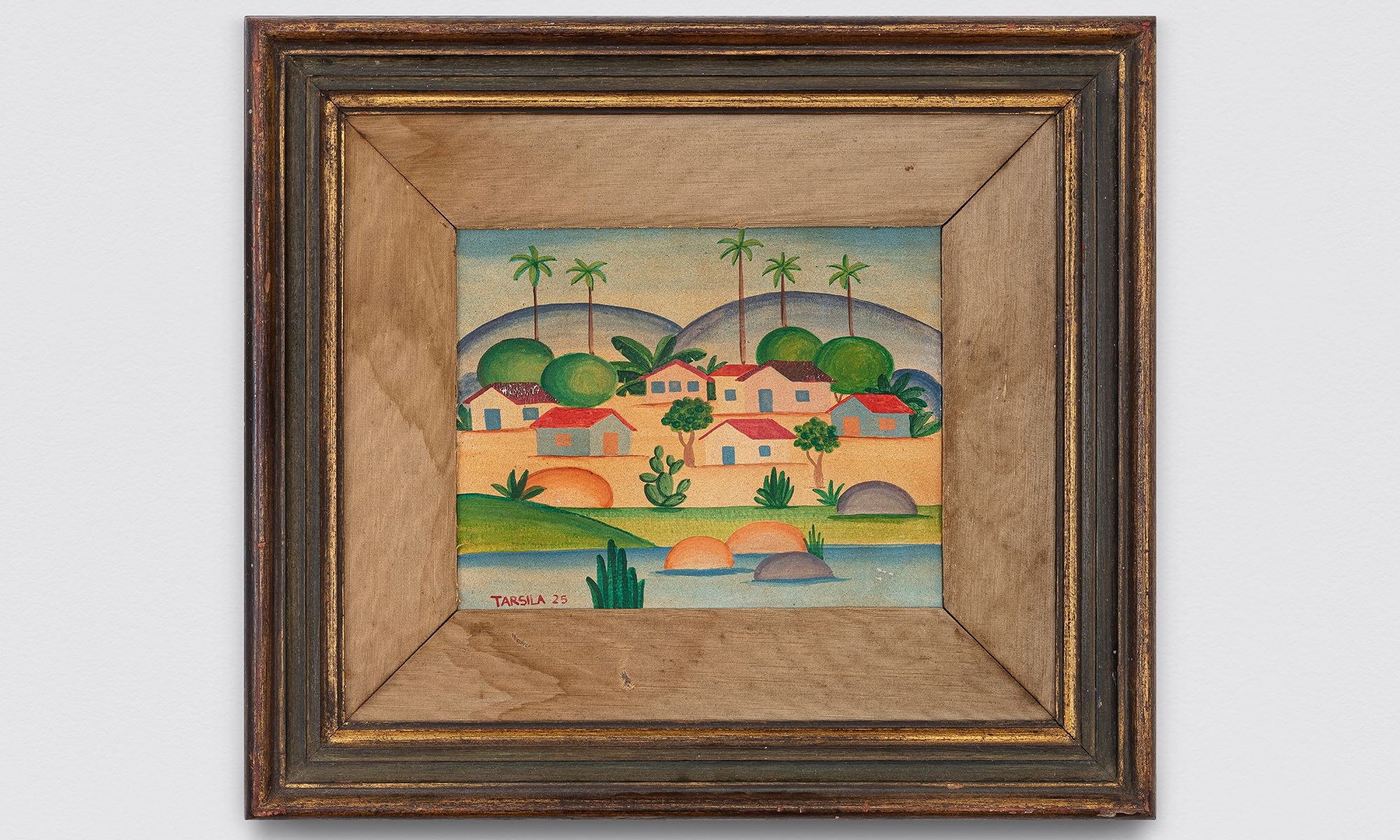The painting attributed to Tarsila do Amaral and dated to 1925, whose authenticity a leading auctioneer called into question OMA Galeria
An auctioneer has claimed that a painting attributed to the Brazilian artist Tarsila do Amaral (1886-1973), and which was offered for sale at the SP-Arte fair in São Paulo last week for 16m reais ($3.2m), is in fact a forgery.
The painting was shown at SP-Arte by São Paulo’s OMA Galeria. According to Thomaz Pacheco, OMA’ s owner, the painting is from 1925, when Do Amaral lived in Paris during a formative period in her career. The painting, which has no known title, was shown privately to interested clients during the fair, and was not part of the gallery's presentation on its stand. Pacheco disagrees with the forgery claim, stating that one can not judge the authenticity of a painting by looking at a photograph of it.
“The people who have spoken out so far in the press, questioning the veracity of the work, none of them have seen the painting, no one," he tells The Art Newspaper.
The painting came under scrutiny on 4 April, when the newspaper Folha de S.Paulo published an article in which Jones Bergamin, the president and director of Bolsa de Arte, one of Brazil’s leading auction houses and secondary-market galleries—who has not examined the work in question in detail—asserted that it is a forgery.
“I said and I reaffirm that it is not an authentic work, I don’t need to see it up close to be sure of that,” Bergamin told Folha de S. Paulo. “If you show me the image of a three-dollar bill I won’t need to hold it in my hand to say that it is not real.”
Bergamin added: “If it were authentic, it would be more valuable than 16m reais, it should be worth 25m reais, 30m reais. I've known and worked with [works by] Tarsila for many years.” In December 2020, Bergamin’s auction house sold Do Amaral’s A Caipirinha (1923) for 57.5m reais ($11.2m), setting a new record for Brazilian art at auction.
On 4 April, SP-Arte released a statement on the issue. “Our application process follows international fair standards, where exhibitors present their projects and the analysis is carried out by a selection committee,” the statement reads. “Regarding the work itself, it was not displayed on the walls of the stand nor was it included in the approved project.”
Pacheco says the work was never a part of his gallery’s official presentation at the fair. “The work is not and has never been exhibited at the fair,” he says. “It was only shown to two people who went to the event to see it.”
São Paulo-based specialist Douglas Quintale, one of the few people to have examined the painting, saw it at OMA Galeria and was hesitant to speak one way or the other on its authenticity.
“I went on Friday [5 April] to the gallery to see the painting and asked for the frame to be removed so I could further inspect it,” Quintale tells The Art Newspaper. “Even then, I am not comfortable in calling it authentic or fake until further tests are run, and I can see the provenance documentation on it." He adds: “No one is capable of looking at a work that is not rudely made and say that it is false, without seeing it in situ and analysing it scientifically. It's irresponsible.”
Quintale says that representatives of Do Amaral’s estate and Pacheco showed interest in further analsys to determine the painting's authenticity definitively. “I believe that both are interested in finding out the truth,” he says, adding that a thorough and definitive analysis could take as long as 90 days to conduct.
“Until the final opinion is released, any new information regarding the legitimacy of the work will be pure speculation,” Pacheco says.

